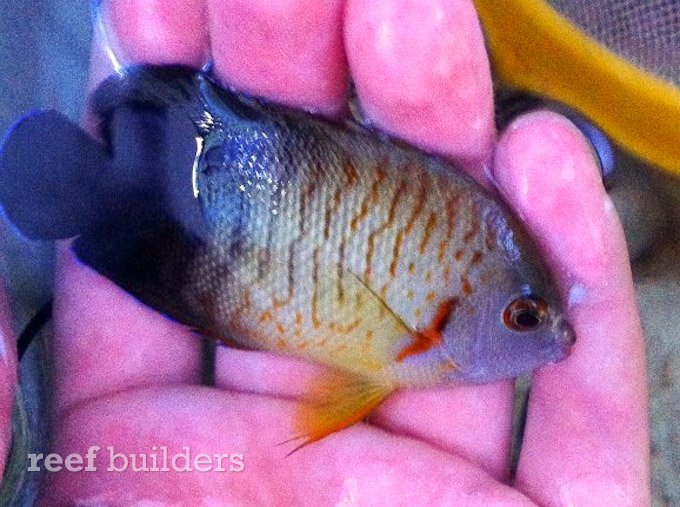the Eibli’s dwarf angelfish, is a common dwarf angelfish hailing from the Indo-Pacific. It is well known in the trade as a common fish, but even more well known for its abilities to produce magnificent hybrids.
 The fish is promiscuous in nature and forms many naturally occurring hybrids between the closely related C. flavissima, and rarely, with C. heraldi. Hybrids with C. flavissima are rare, but the offsprings are some of the most unbelievably gorgeous creations, as seen in the Tigerpyge dwarf angel that took the angelfish world by storm.
The fish is promiscuous in nature and forms many naturally occurring hybrids between the closely related C. flavissima, and rarely, with C. heraldi. Hybrids with C. flavissima are rare, but the offsprings are some of the most unbelievably gorgeous creations, as seen in the Tigerpyge dwarf angel that took the angelfish world by storm.
The Eibli’s angelfish also hybridizes with another species that is very closely related, which is Centropyge vrolikii. In areas like Bali where C. vrolikii greatly outnumber C. eibli, hybrids between the two parent species are abundant as the less common species is forced to breed with the more common one. This phenomena is the basis of how most hybrid fishes arise, and is replicated in numerous areas with different fish species. One famous example occurs in Cebu, where flame angelfish (C. loricula) is rare and is forced to breed with the more common rusty angelfish (C. ferrugata), to produce the once very rare, Rusty-flame angelfish, or the false shepardi.
The hybrid Centropyge shown in the video and pictures below is a cross between C. eibli and C. vroliki. While this hybrid is extremely common, sometimes even outnumbering the parent species, the offspring usually appear dull and boring. At times resembling C. vrolikii with faded orange stripes, or sometimes bearing almost no stripes. It is hardly surprising, since C. vrolikii is essentially, in terms of appearance, a replica of Eibli’s angelfish sans the orange stripes.One would imagine that having a hybrid between the two would result in the dilution and fading of the orange stripes. That is apparently not the case with this individual.

The fish has a full body of broken orange stripes that starts at the head and ends toward the lower back. The broken bars at the lower half combined with the dark, almost blue-grey face, is almost a throwback to the famous Tiger angelfish. It is not evident in the pictures, but if you watch the video in 1080p HD, there are light grey stripes and squiggles that invade the black back and unpaired fins of the fish. I’ve had the chance to obtain this fish from a Bali shipment and it is interesting to observe the change in coloration or pattern in this individual. I’ve started to notice an increase in the grey stripe formation towards the back, and it is unknown if it will continue to develop or stop in time to come.
While no where near as beautiful as the Tigerpyge lemonpeel or the Rusty-flame angelfish, this “kingii” Centropyge is an excellent example of hybridization between closely related species. More often than not, a population of hybrids may get exiled due to intrinsic forces of nature and start to interbreed amongst themselves, further cementing the hybrid traits and in time, may even evolve into a separate species.



